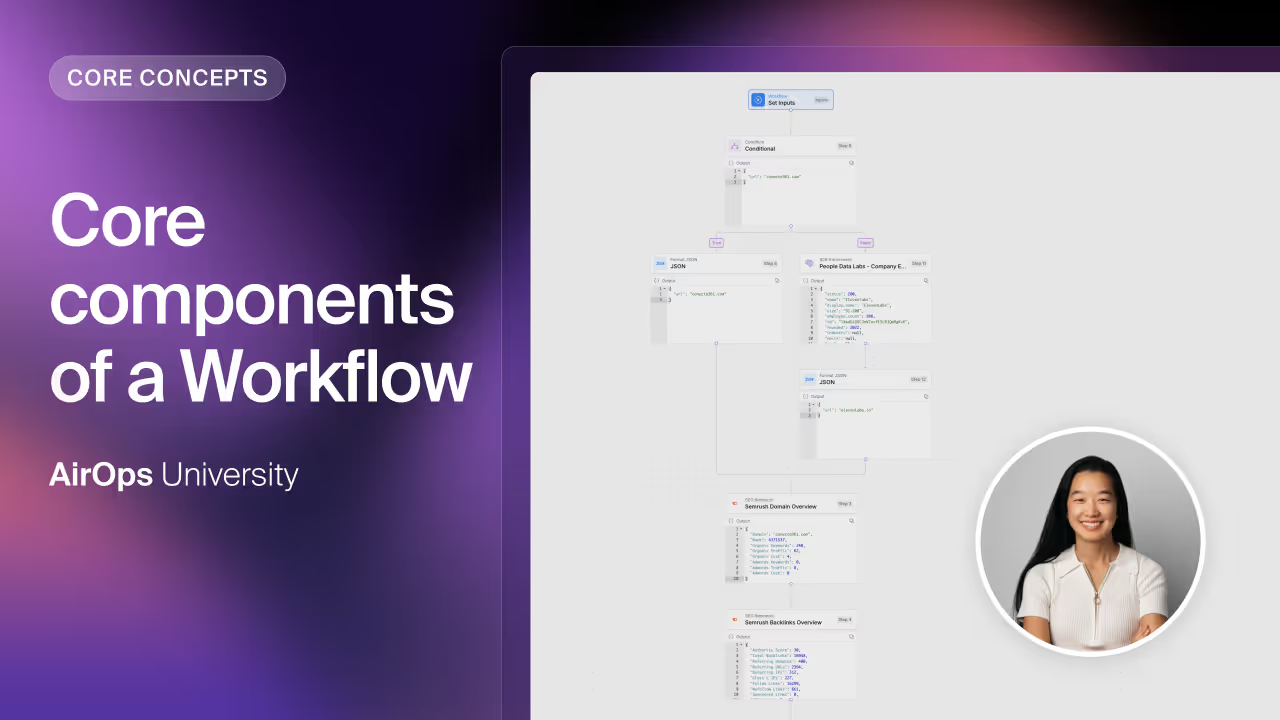Core components of a Workflow
The Workflow Mental Model
A Workflow in AirOps follows a simple, three-part structure:
- Inputs
What you provide manually when you run the Workflow. - Steps
The sequence of actions, including:- A large language model step
- Research or enrichment steps to enhance content
- Output
The final content you want to produce
Why Use Workflows at AirOps?
AirOps is committed to creating high-quality content that doesn’t just sound like AI. Relying solely on LLMs often leads to generic phrases (“unlocking,” “dive into the world of,” “game changer”) and formulaic writing. Two core challenges arise:
- LLMs have inherent limitations in crafting nuanced, engaging content
- Unassisted models tend to default to clichés and broad language
Adding Context and Techniques
The solution is to enrich each Workflow with additional context and targeted techniques:
- Contextual Prompts guide the LLM toward specific, high-value output
- Research Steps supply curated information back into the model
- Structured Workflow Design ensures every step reinforces quality and relevance
A Workflow provides the framework to overcome LLM limitations by embedding context at every stage. The core of any AirOps content Workflow is the large language model step—but it shines brightest when supported by research, prompts, and thoughtful structure.
This is the key mental model that will guide every Workflow you build in AirOps.

